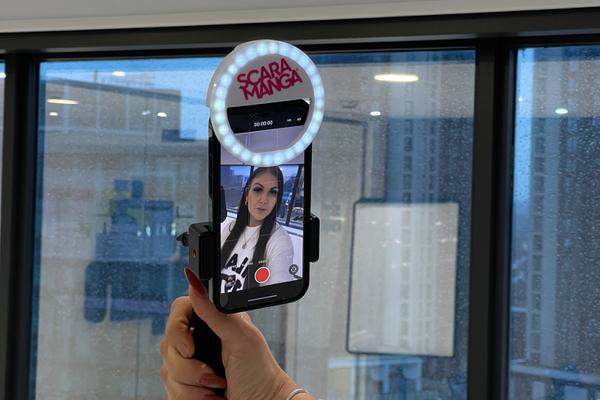Social selling: what’s in store?
Written by Jamie Joseph
Social selling is a type of e-commerce where shopper’s friends and communities are involved in the shopping experience. This is often through user-generated product reviews, but can also be through affiliate campaigns and brand endorsements.
This article has been assigned the following categories: Social media, News,

As we continue to integrate social media into our lives in a variety of ways, one emerging trend has been social selling/shopping. In 2023, 37% of US TikTok users purchased a product through the platform and in 2024, 56% of US millennials used TikTok shop at least once a week.
The beginning of social selling
Social selling has been attempted in western markets in the past, however, failed due to a lack of adoption and digital affluence (access to, understanding of, and usage of digital devices). In contrast, eastern markets have adopted the integration of social selling quickly with multiple major social media platforms supporting it.
Social selling was pioneered in 2014 by the platform Xiaohongshu (aka RedNote), which recently saw popularity grow in the US following TikTok’s temporary ban. RedNote launched in China in 2013 as a social media platform for Chinese tourists to share good quality products and services they found overseas. Following an increase in users, the app transitioned to a social selling (e-commerce) model, which allowed users to purchase the products that they liked from user-generated reviews directly through the platform.
Social selling in the west
Groupon, established in 2008, was one of the first examples of a western social commerce platform, where discounts could be earned through large groups signing up to a particular reward. This was called the ‘tipping point’ which required a predetermined number of consumers, such as 200, to make a purchase before merchants had to honour the discount.
Groupon saw limited success with this model due to the lack of digital interconnectivity; most of the time users would have to wait on strangers over the internet to participate via their emails, causing frustration and eventually users would give up. Groupon abandoned this business model in 2016 and now acts as an e-commerce marketplace for local merchants with activities to offer discounts for group bookings.
Social selling in the east
A more recent social selling platform to emerge in China was Pinduoduo, a group discount platform offering discounts when a certain number of users want to buy a product in bulk. Similarly to Groupon, this requires a group of users to participate in the discounts, however, the largest difference is that only two or more users need to participate, not 200. Pinduoduo has positioned themselves in China’s most neglected market for e-commerce –third and fourth tier cities, which have far less disposable income than first and second tier cities, meaning deep discounts for yourself and your friends are highly sought after.
What is the leading platform?
Social selling is synonymous with user-generated content, however, no platforms in the west had successfully integrated it. TikTok, which is owned by the Chinese company ByteDance, has prior experience in navigating social selling in the Chinese market with their app named ‘Douyin’ and used this to set the stage for testing the model in the western market.
Having the expertise and platform to integrate social selling in the western market, TikTok has seen great success with their ‘TikTok shop’. It has seen millions of users create affiliate content and hundreds of thousands of brands sell their products on the platform.
Why is it becoming popular?
On top of the technical implementation and strategy, users are also ready for the ease of use and lower search cost. With the high popularity of beauty products, gaming and home décor, users are able to take part in trends and express themselves. With the added possibility of going viral and having a career in social media (earning commission), participation is also a financial incentive to many.
It is important to consider TikTok shop’s market position, as a large portion of consumers only utilise it when there are discounts and don’t trust the platform enough to commit to big purchases, as they fear some products may be fake. This leaves the market open for premium social selling platforms to emerge, potentially backed by companies like Amazon, eBay and Etsy, with large userbases and strong brand images.
Overview
Social selling’s success in China can be attributed to the eastern markets’ community centric culture in times when social media was not as well established and utilised. Social shopping, which often involves user-generated content fosters a greater level of trust amongst users and the integration of smart phones for purchasing products both physically and digitally reinforced social media as a medium for shopping. In 2024, 80% of China-based consumers said they preferred marketing content created by social media influencers and 85% said they have purchased products after seeing them being used by influencers.
In the western market, only in recent years has the way people use social media changed and the trust in user-generated content has only very recently grown alongside influencers and communities. Seamless digital purchases using PayPal, Google Pay and Apple Pay are still far behind their eastern counterparts, but their adoption during Covid-19 has helped enable the transition to a social selling market.
Social selling was not viable when social media didn’t possess such high levels of trust, as people did not trust the platforms or the creators enough. As social media continues to evolve, we can expect to see the rise of more social selling platforms in the western market. With Amazon having partnered with Pinduoduo to sell western goods in China in 2019, there might be the potential for Amazon to launch a social selling platform or facilitate one in the near future.
If you’re interested in learning more about implementing social selling, we’ll be releasing an article soon on utilising social selling for businesses. Subscribe to our newsletter to be notified upon release.


